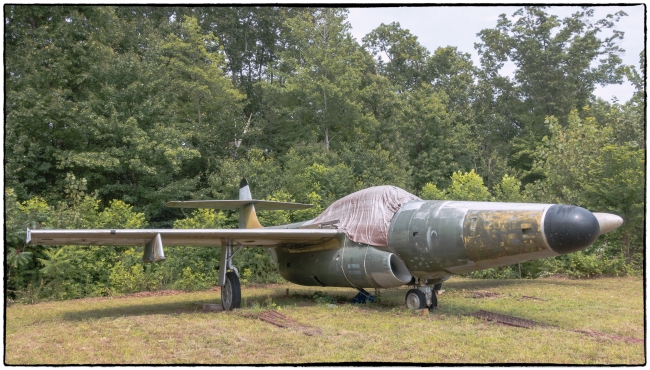According to the Museum’s website (which also provides technical specifications):
The F-89 was the first U.S. Air Force jet fighter designed as an all-weather fighter/interceptor for the Air Defense Command (ADC). Nicknamed the “Scorpion” with its high, up-swept tail, it was a two-seater with a radar operator in the rear seat with advanced radar to guide a pilot to locate, intercept and destroy enemy aircraft day or night under all types weather conditions. Designed shortly after the World War II, it made its first flight in August, 1948 and was first delivered to the U.S. Air Force in July, 1950.
In July, 1957, an F-89J, similar to the one on display, fired a Genie test rocket, the first time in history that an air-to-air rocket with a nuclear warhead was launched and detonated. The F-89J, a conversion from the main production F-89D, was the final variant of the F-89 and was Air Defense Command’s first fighter/interceptor to carry nuclear armament.
A total of 1,050 F-89s were built and were part of the interceptor force guarding the northern borders of the United States during the Cold War against Soviet bomber attack. They were retired from the Air Defense Command in 1959 and served another 10 years with units of the Air National Guard.
Taken with a Sony RX-100 M3.

